Zoroastrianism
Zoroastrianism
Religious faiths were important in the growth of ancient civilizations. They were a significant bridge between the interactions of empires, states, and the people. Central Asia was no exception. The growth of beliefs and religions between the sixth century B.C. and the sixth century A.D. had a proven role in the cultural and political shifts of Central Asia.
Zoroastrianism is one of the world’s oldest monotheistic religions. It was launched by the Prophet Zoroaster (or Zarathustra) in ancient Iran, approximately 3500 years ago. Zoroastrianism belief spread through the territory of ancient Iran (Persia) and Central Asia in the 7th c. – 6th c. BC.
Zoroaster, or Zardusht, Zarathustra, Zardust, is the prophet of Zoroastrianism. It is believed that Zoroaster lived about in the 1st half of the 6th century BC. He wrote the numerous ancient parts of the holy book of Zoroastrianism called “Avesta”. It is also believed that Zoroaster began preaching in Eastern Iran and Central Asia. He opposed worshiping chiefs of the tribes, priesthood, and old gods. According to oriental legends, Zoroaster lived and preached in Bactria when King Vishtapa ruled there. This king was the first to adopt Zoroastrianism and is often mentioned in the Zoroastrian scripts as a righteous king.


Zoroastrianism was practiced In Central Asia in Ancient times
The geographical situation of Central Asia at the crossroads of major cultural routes also committed to this power. Zarathustra’s statements, predating Judaism, Christianity, and Islam, also focused on the uncreated God, Ahura Mazda, creator of all things, and hypotheses on paradise and hell.
In the mid-20th century, the Russian archeologist and orientalist S.P. Tolstov studied the ancient monuments dating from the mid-1st millennium B.C. and concluded that Zoroastrianism had originated in the ancient Khorezm. Today this idea is supported by numerous distinguished scholars. To date, 63 Zoroastrian monuments have been found, including those in Iran, India, Afghanistan and Pakistan. Thirty-eight of them are in Uzbekistan, whereas 17 of these monuments are located in old Khorezm empire area.
Zoroastrian sites in Central Asia
Zoroastrian sites in Uzbekistan
Chilpik - Zoroastrian funerary tower
Chilpik Dakhma is a 2200 year old, hollow tower that sits a top a vast, arid land. It once lay next to the Amu Darya river that fed the once mighty Aral Sea but the river course has since moved further away.
Chilpik was a dakhmo, a Zoroastrian funerary tower, mirroring the dakmo in Mumbai. It was likely closed off for the exclusive use of the nobility. From around the second century, or somewhere in that time, the structures are so ancient and under-studied that it’s difficult to pinpoint exactly when, elaborately costumed barges snaking down the river brought the dead here, where the bodies were then laid prone to the elements and birds. The remains would then be enshrined in tomb-like ossuaries.
Ming Urik - ancient settlement
The Museum of the ancient settlement “Ming Urik” is one of the outstanding ancient objects of Tashkent from the era of Zoroastrianism.
During its time, Ming Urik was densely populated flourishing city with its walls, great architecture, urban life and craftsmen. There was also a fortress citadel in the city, which served as protection during attacks. Some of the strongest buildings have survived to this day and can be seen at the site. According to Arab historians, there was a richly decorated palace in the city with a sacred fire always burning inside it. It was an important symbol of Zoroastrianism which was the dominant religion in the area until the 10th century AD when Zoroastrianism was replaced by Islam.
Khorezm
Khorezm was the heartland of Zoroastrianism and it is not a surprise that the largest collection of zoroastrian sites are located there.
Khorezm Fortresses
Most of the Fortresses (Kalas) of Khorezm were also zoroastrian. Many of them have still remains of the altars with the ever burning flames.
The Sherdor madrasa portal in Samarkand Registan has also proof of Zoroastrian influence in Central Asia in the form of a face of a man, even though it has been built long after the dominion of Islam. A similar face can be also found in the very center of Tashkent. The most common explanation for this is that the face represents the sun and therefore the Zoroastrian history of Uzbekistan.

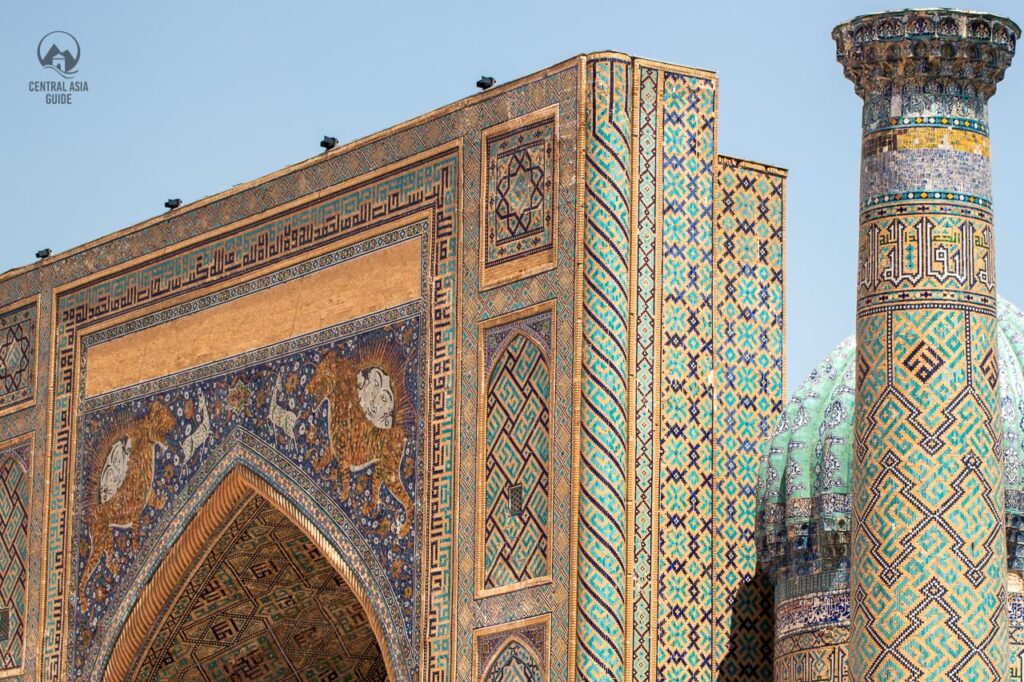
Zoroastrian sites in Kyrgyzstan
The best known Kyrgyz zoroastrian site is the ruined fortress city of Navekat, which is one of the medieval fortress cities of the Chui valley. It is located not far from Bishkek. The clear remains of this once great city are the Zoroastrian graves that were found together with the graves of other cultures.
Zoroastrian sites in Tajikistan
Mugh Teppe (or Kalai Mugh) in Istaravshan, in Northern Tajikistan, together with the town museum have zoroastrian sites and artifacts. Takht-i-Sangin complex by the Amu Darya is the most important ancient zoroastrian site in Tajikistan. In addition, remains of Zoroastrianism can be found in old Panjakent.

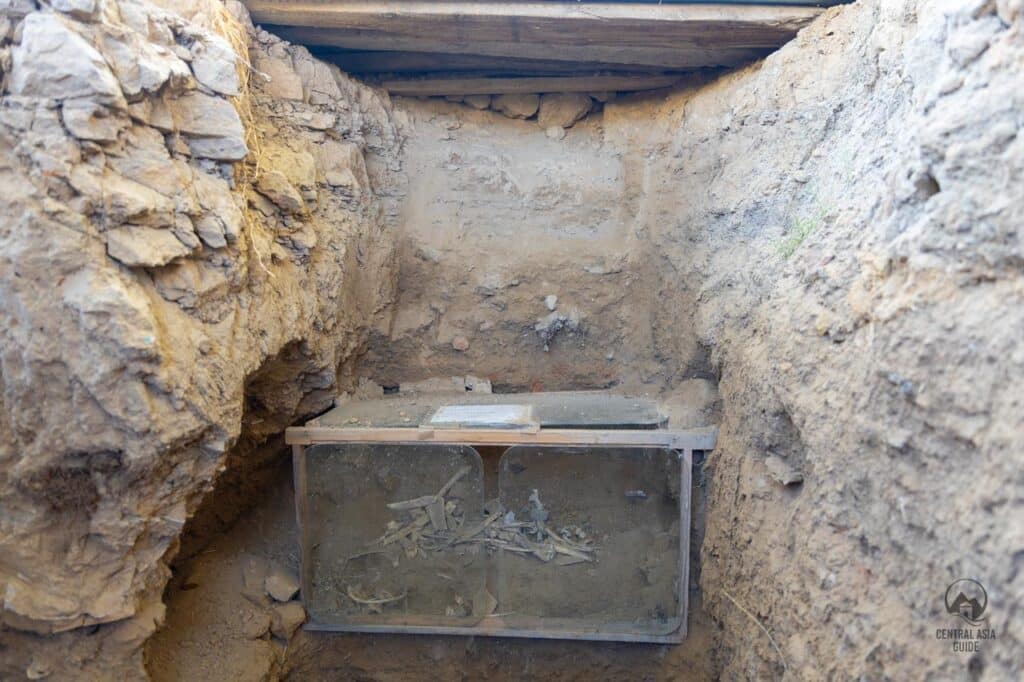
The Yamchun fortress in Wakhan Valley of the Pamirs is ofter referred to as the fortress of fire worshippers and in the Yashilkul lake there are about 4000 year old stone circles that are believed to be related to Zoroastrians.
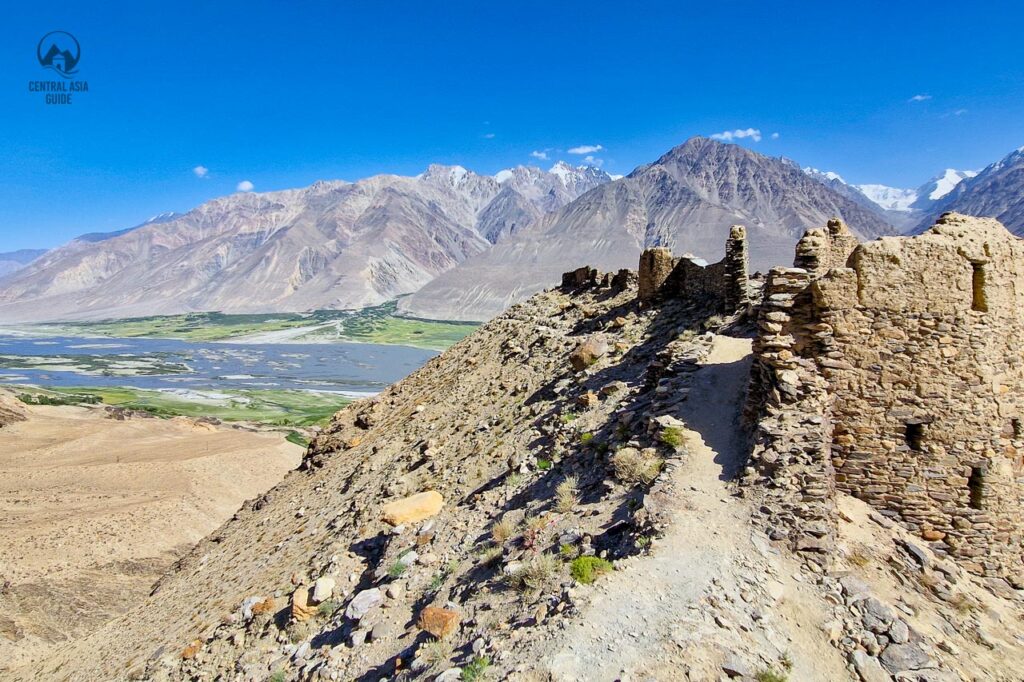

Zoroastrianism in current Central Asia
Zoroastrianism in Pamirs - Tajikistan
Zoroastrianism is still widespread in the Pamirs and on the road in ishkashimsky district you can find an old Zoroastrian temple. The temple of fire worshippers is a fenced yard with a sacrificial altar. Adherents of Zoroastrianism worship fire and light. The temple is decorated with mismatched horns of mountain goats and rams. In Zoroastrianism horns or antlers represent an amulet, which protects from evil spirits.
There are also tens of other shrines and holy Zoroastrian sites in the Pamirs that people still visit for prayers.
In Kyrgyzstan, but also in other Central Asian countries, the burning of Archa (Juniper) to produce a scent and smoke is still believed to ward from evil spirits and to drive them away. Branches for this burning ritual are readily available in most bazars in Central Asia.
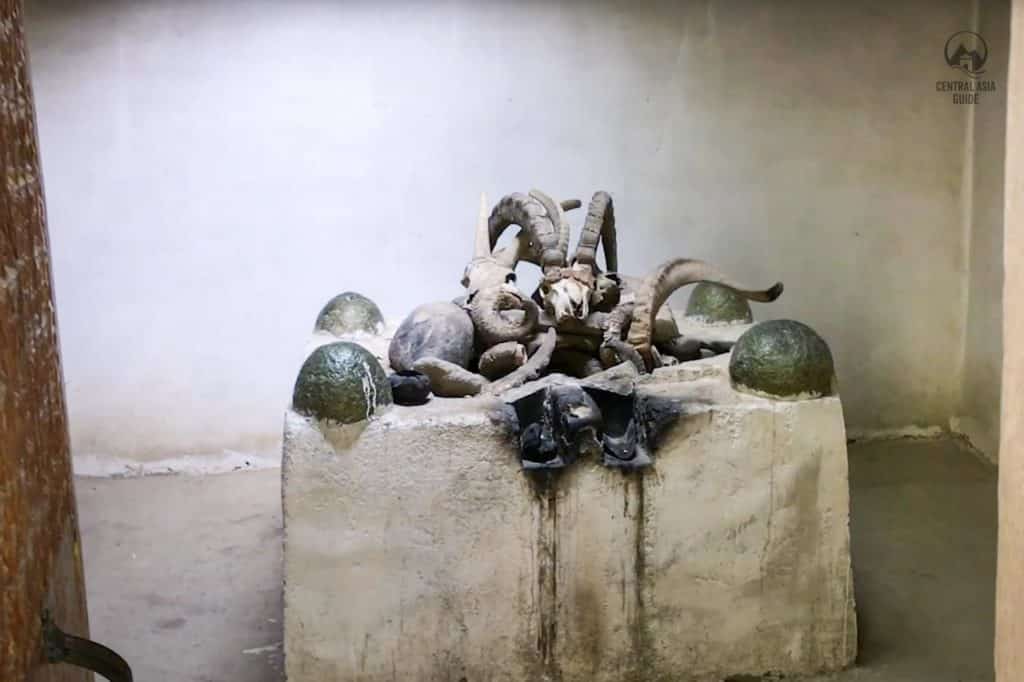
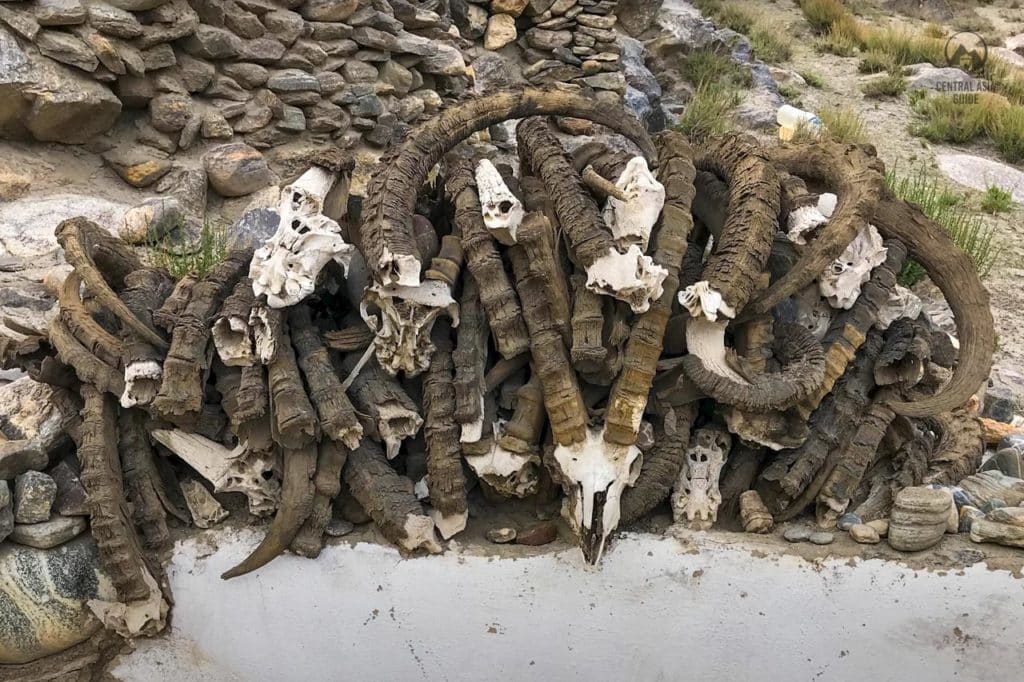
Noruz - Zoroastian (Persian) New Year
Noruz also known as Jamshedi or Jamshidi Noruz, is the seventh compulsory feast and is dedicated to fire. It is the Zoroastrian New Year celebration and occurs on the spring equinox. Noruz is profoundly rooted in Iranian and Central Asian culture and it is still celebrated as the Iranian New Year in Islamic Iran as well as in all of Central Asia. Many fires are lit and there is feasting and celebrations. In modern times fireworks have also become part of the festivities.
More Central Asian Culture
Page updated 25.9.2024